A small hummingbird characterized by its diminutive size and a straight, stubby bill that displays a striking, iridescent green plumage and notably sports elongated, sharply pointed tail feathers.
Meet Green Thorn:
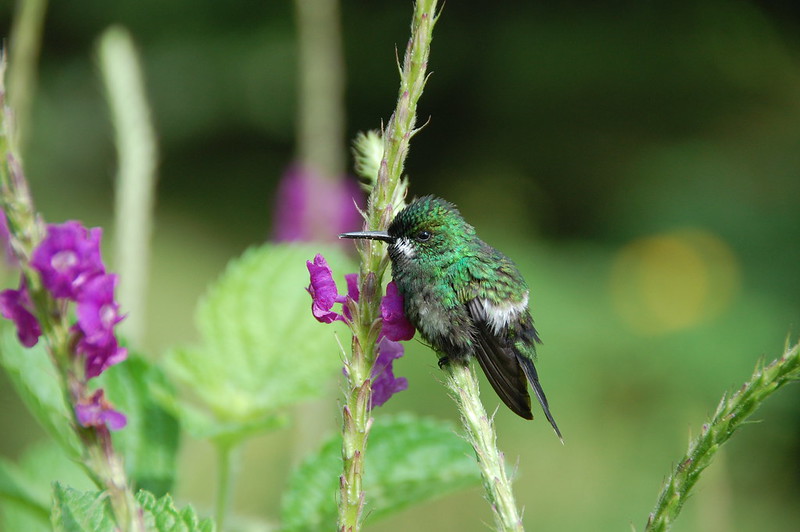
Photo courtesy of Noel Reynolds/Some rights reserved.
Description: The green thorntail (Discosura conversii) is a petite hummingbird belonging to the “coquettes” group within the Lesbiini tribe of the Lesbiinae subfamily. Adult male green thorntails measure approximately 9.5 to 10.2 cm (3.7 to 4.0 inches) in length, while females are around 6.6 to 7.5 cm (2.6 to 3.0 inches) long. Five individuals of unknown gender had an average weight of 3.0 g (0.11 oz). Adult males showcase a dark green crown, a slightly lighter metallic green back, and a coppery bronze rump with bluish-black markings and a white band. Their forked tail is predominantly bluish black, with very narrow outer feathers, giving rise to the common name. The throat gleams with bright metallic green, while the breast and belly are primarily darker green, with the center of the breast displaying a bluish-green metallic hue.
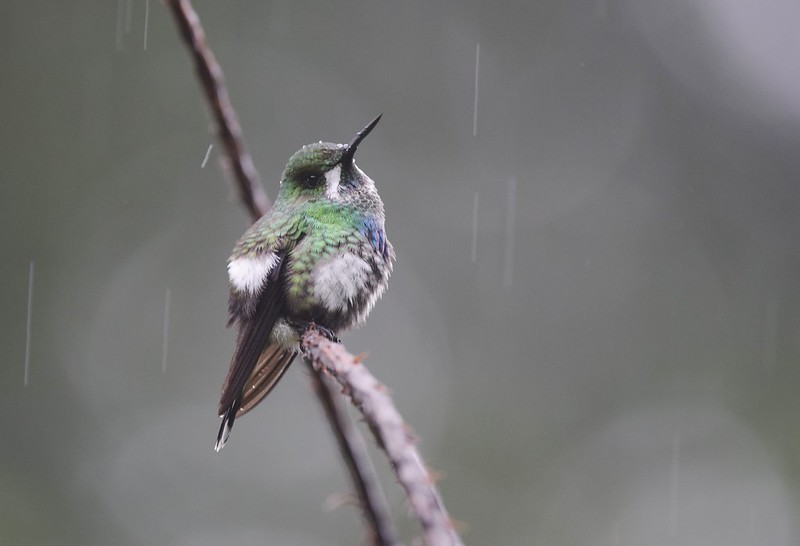
Photo courtesy of Andy Reago & Chrissy Mc/Some rights reserved
Adult females share similar upperparts with males but possess a darker rump and a notched, rather than elongated, tail. Most tail feathers, except the outermost pair, are bluish-black with dark green bases, while the outermost feathers have white bases, a blue-black middle section, and white tips. Their facial features include a broad white cheek patch. The chin appears dull black with white spots, while the flanks exhibit a dull green hue with a white spot.
The breast and belly of females are dull black. Juveniles closely resemble adults but tend to have a more grayish-white chin.
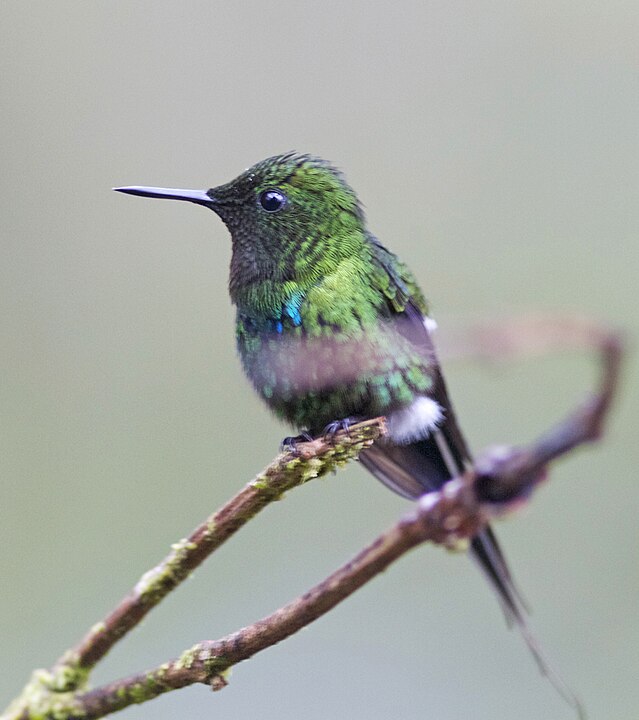
Photo courtesy of Joseph C Boone/CC BY-SA 3.0.
Distribution and Habitat: Green thorntails can be found on the Caribbean slope in Costa Rica and the Pacific slopes of Panama, Colombia, and Ecuador, extending nearly to the Peruvian border. There is some belief that they may also inhabit the Caribbean side of eastern Panama.
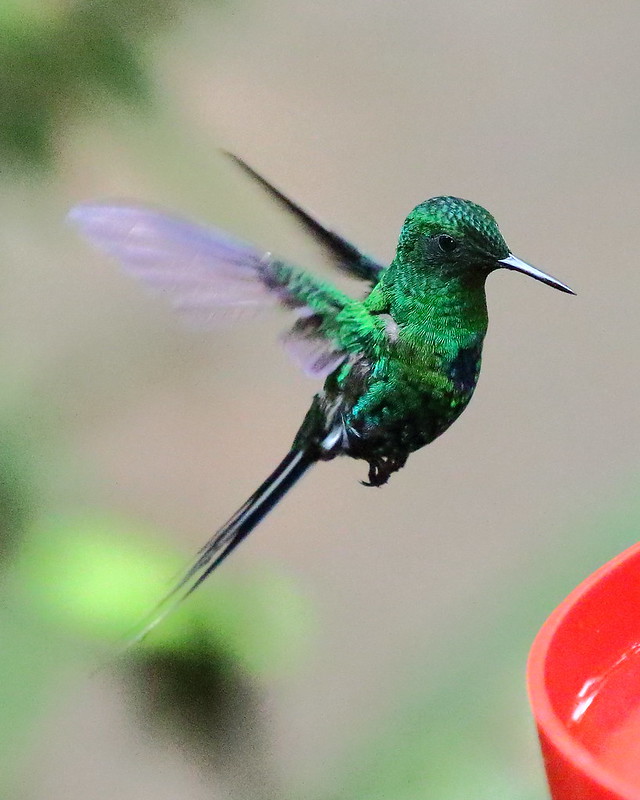
Photo courtesy of ryanacandee/Some rights reserved.
These birds primarily reside in forest canopies, occupying the upper layers of humid montane forests, lowland evergreen forests, and areas near flowering trees in clearings. In terms of elevation, they are typically found between 700 to 1,400 m (2,300 to 4,600 ft) in Costa Rica, 600 to 1,200 m (2,000 to 3,900 ft) in Panama, from sea level to 1,000 m (3,300 ft) in Colombia, and at elevations ranging from 300 to 1,000 m (980 to 3,300 ft) in Ecuador.
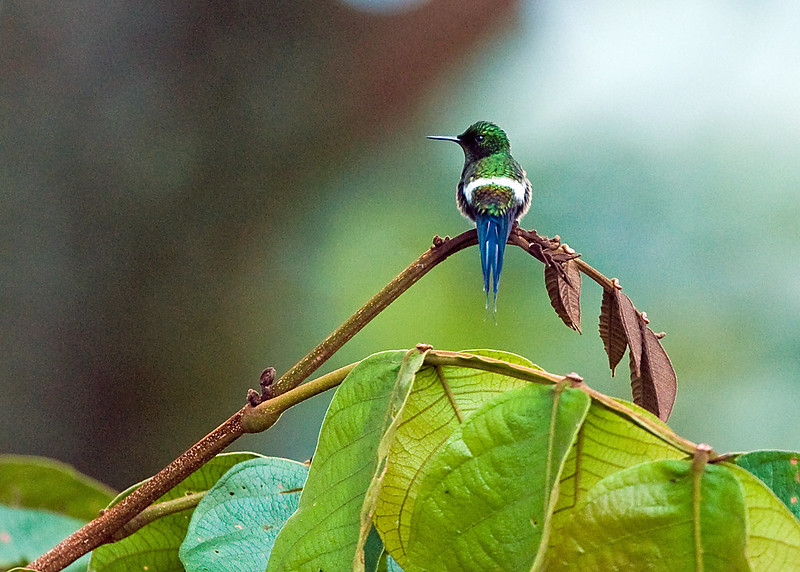
Photo courtesy of sam may/Some rights reserved.
Feeding: These birds primarily feed on nectar from the tops of flowering trees, as well as from epiphytes and shrubs. They have a preference for legumes and feed by hovering with their tails cocked at nearly a right angle to their bodies. In addition to nectar, their diet includes small arthropods such as flies, wasps, and spiders. They capture these insects by hawking from a perch and gleaning them from the undersides of leaves while hovering.
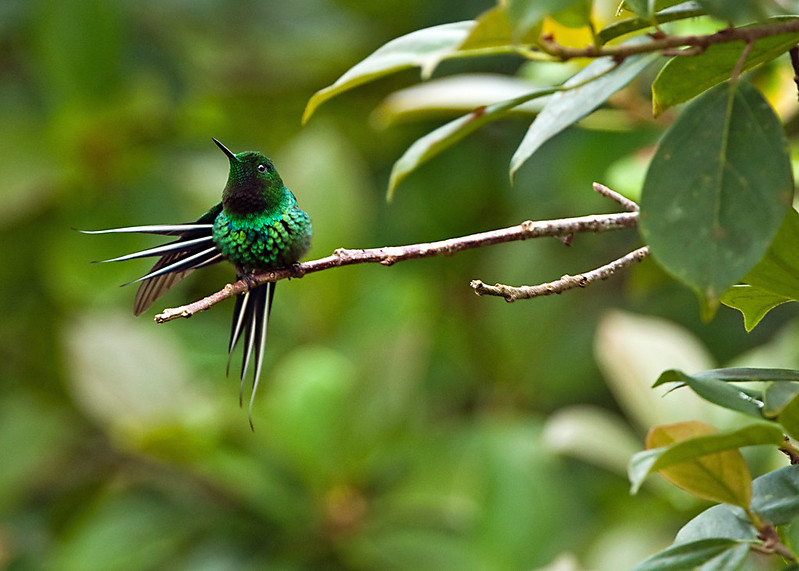
Photo courtesy of sam may/Some rights reserved.
Breeding: Breeding males of the green thorntail typically perch on high, bare twigs and may engage in dive displays. The species’ breeding season varies across its range and is not precisely defined. It is believed to span from November to April in Costa Rica, with displays noted in Colombia in June. While all hummingbirds lay two white eggs that are incubated by the female alone, specific details of the species’ breeding phenology remain unknown, and the nest has not been described in detail.
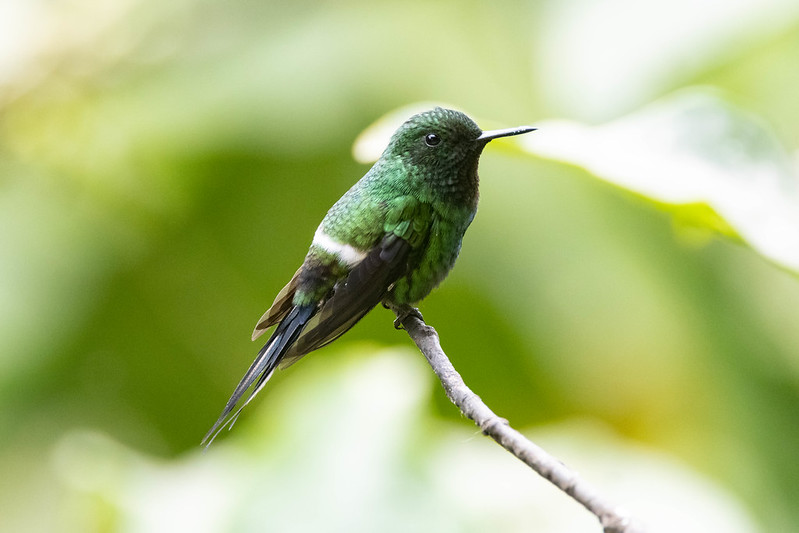
Photo courtesy of Ryan Mandelbaum/Some rights reserved.
Conservation Status: The International Union for Conservation of Nature (IUCN) classifies the green thorntail as “Least Concern.” Although the population size is uncertain and believed to be decreasing, the species is considered rare and localized in Panama, uncommon to common in Colombia, and uncommon in Costa Rica and Ecuador. While it is “vulnerable to widespread habitat loss or degradation,” it appears to be minimally affected by human activities in the short term.
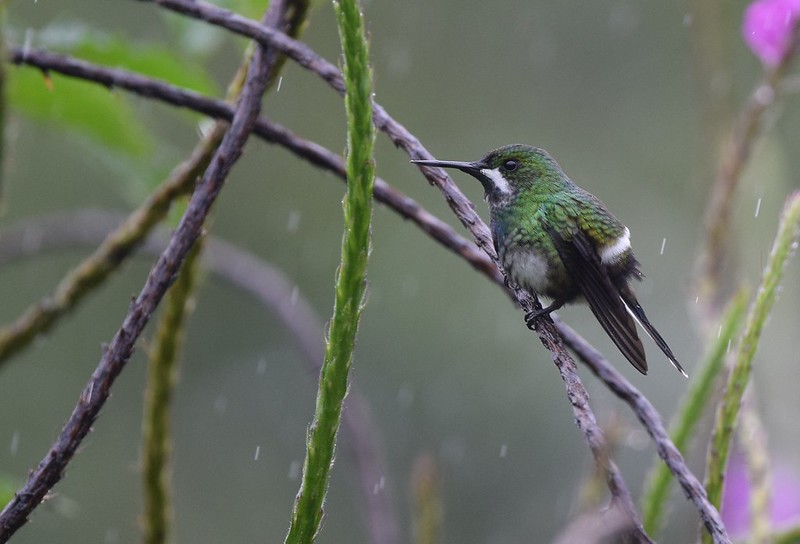
Photo courtesy of Ryan Mandelbaum/Some rights reserved.
Watch this bird next:




